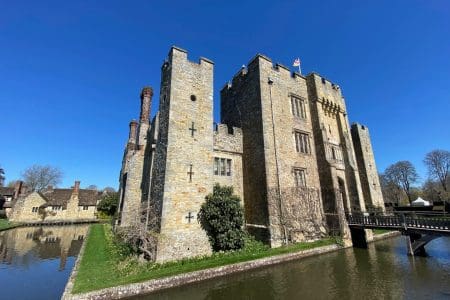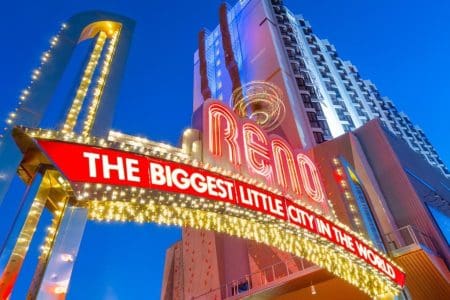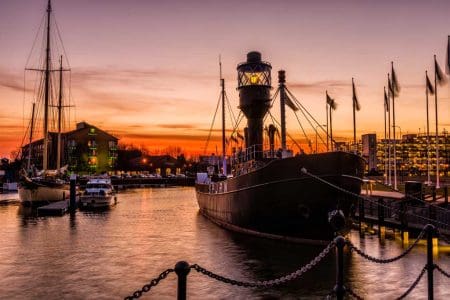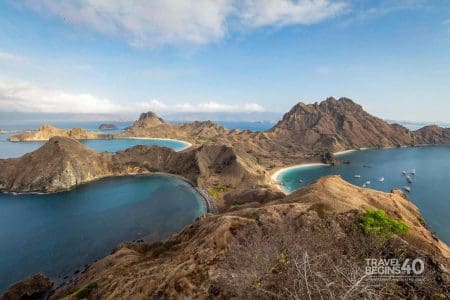The previous few days had challenged my pre-formed opinion of the Rust Belt. Buffalo and Cleveland were both interesting and lively cities with plenty of architectural gems and lots of great culture, but nothing could prepare me for my final destination. Pittsburgh is pretty. Yes, its prosperity might be founded on the steel industry – the football team is the Steelers, but this is no Sheffield, as I discover on my Sunday morning walk through Pittsburgh.
Fourth Avenue
A stroll along Pittsburgh’s Fourth Avenue on the Sunday morning, especially when the sun is out, is a wonderful thing. It is like a miniature Manhattan. Towering skyscrapers rise from the street like early 20th century temples to industry.
There are so many wonderful buildings it’s impossible to choose a favourite. The Arrott Building built between 1901-2 is one of the earliest skyscrapers in the city. Designed by Frederick Osterling it has a wonderful marble foyer. Now the Industrialist Hotel and part of the Autograph collection, even if you are not a guest pop in for a look.
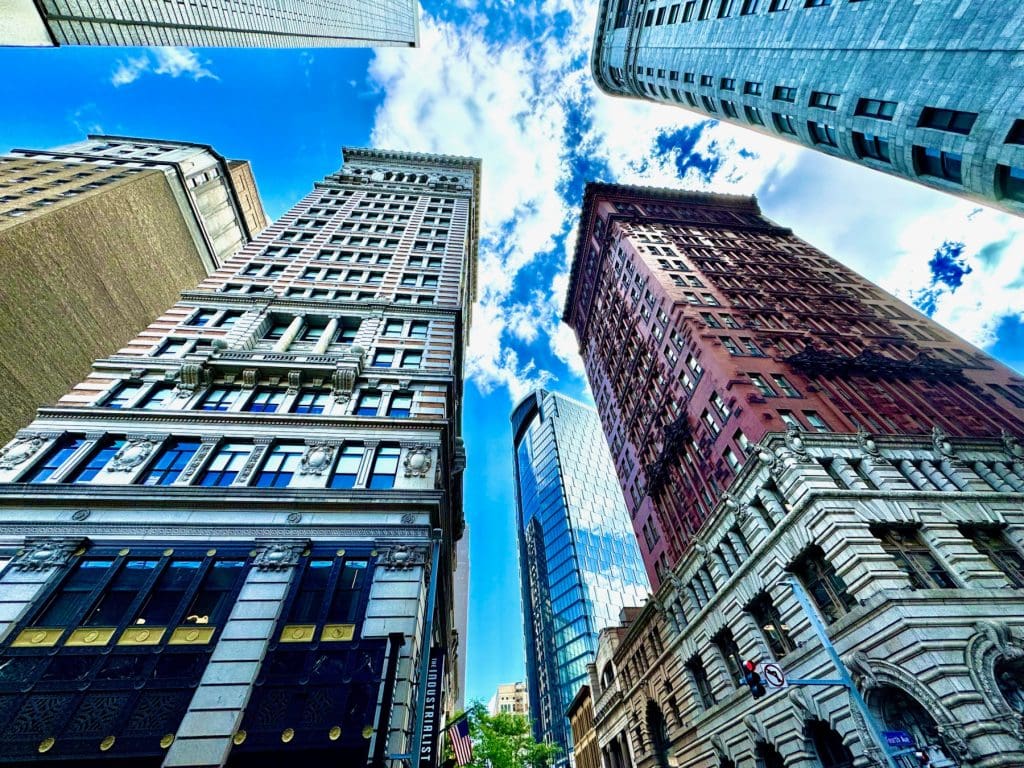
Just along Fourth Avenue is the old stock exchange which has been demolished for a parking lot. Fortunately, the wonderful 1905 Benedum-Trees building next door remains. Although the exterior is like a Greek temple the lobby is Art Deco.
Sandwiched between all these towering buildings is Burke’s Landmark (1836) which would not look out of place in a dramatisation of a Jane Austen novel.
However, perhaps the most striking of all is the much more modern PPG Place.
PPG, formerly Pittsburgh Plate Glass, was founded in 1883. Their headquarters, built between 1981 and 1984 is a Gothic Cathedral covered in glass, with huge towers that glisten in the sun. PPG Place spans several blocks and has more than 200 spires, as well as a courtyard which has a fountain in which children play. In winter it transforms into an ice skating rink with a Christmas tree. Apparently, it has more than one million square feet of glass.
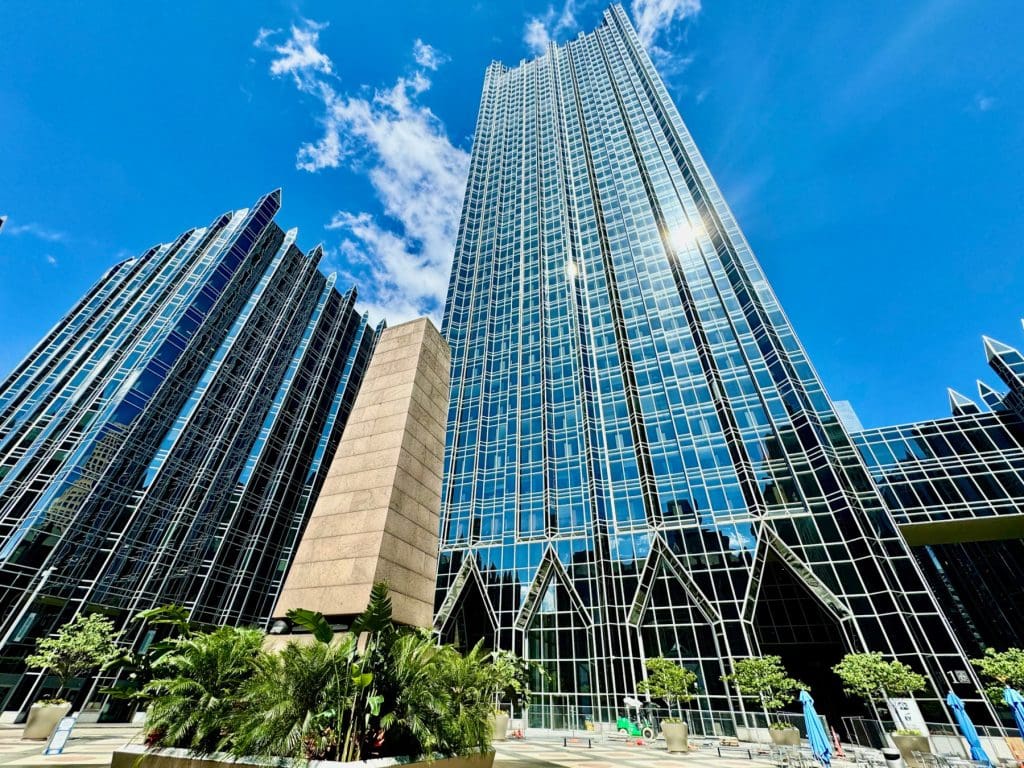
Market Square
After PPG Place I turn right across Fourth Avenue and pass through the pedestrian walkway directly into Market Square.
As I arrive, they are setting up for World Square Day, one of the many events held here throughout the year.
Primanti Brothers Bar & Grill is a Pittsburgh classic. As lunch approaches, I sit down on the terrace and enjoy one of their classic sandwiches – a doorstop with fish chips and coleslaw all stuffed inside. Perhaps not one to take just before your next medical but it tastes great.
Theatre Square
I pass a stunning building with Art Nouveau designs on Fifth Avenue before arriving at the 1926 Heinz Building, which use to be Loew’s Penn Theatre and marks the start of Theatre Square. Surely it has the most beautiful external fire escape in the world?
Next is Agnes R Katz Plaza which has an amazing 25-foot bronze fountain by Louis Bourgeois which reflects the towering buildings around it.
Across the road is the Cultural District which during my visit hosts the Three Rivers Arts Festival, which has been held in Pittsburgh for around 50 years and has free music, as well as stalls where artists sell their work. It also includes the largest green wall in Pittsburgh.
Three Rivers and Andy Warhol
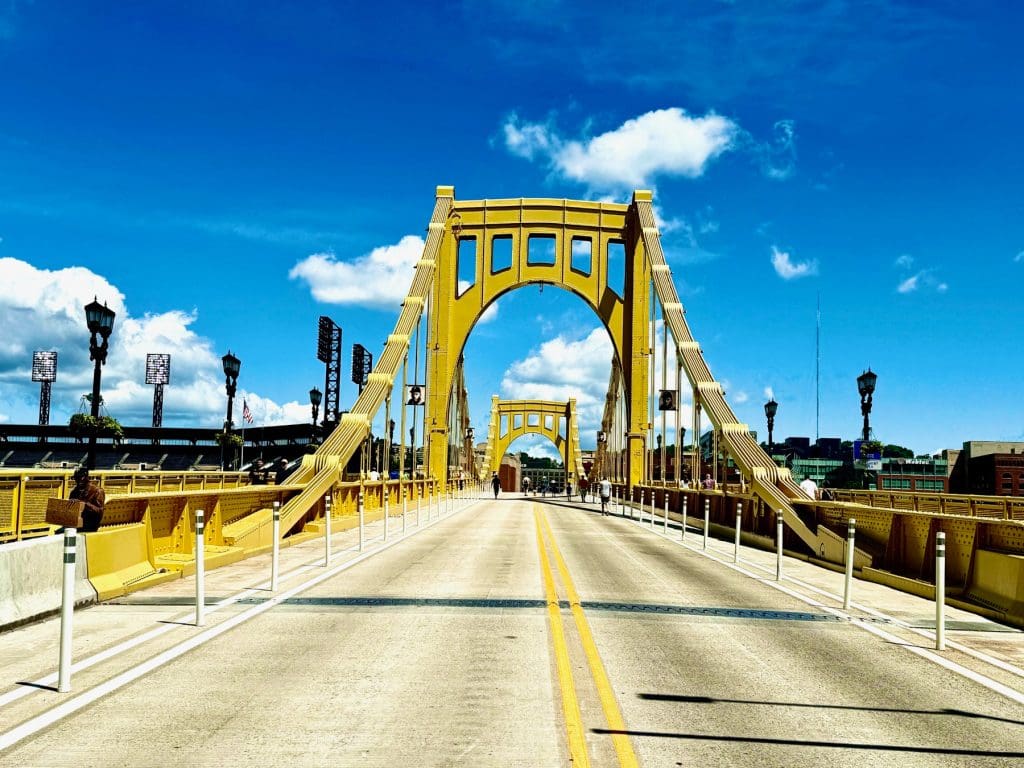
Pittsburgh is built at the confluence of three rivers – the Allegheny, the Monongahela and the Ohio. It also has 446 bridges, more than any other city in the world including Venice, according to Visit Pittsburgh. I cross 6th Street Bridge, which was built in 1928, and is also named Roberto Clemente Bridge after the baseball player. Across lies PNC Park where the Pittsburgh Pirates are due to play a game that afternoon.
The next bridge along is the Andy Warhol Bridge (or 7th Street Bridge) which leads to the Andy Warhol Museum, my first destination of the day. Outside it is the warming sculpture Together 2016 by Kaws.
Warhol is perhaps Pittsburgh’s most famous citizen – at least for fifteen minutes – and The Warhol is more a museum devoted to the pop artist than a gallery. The exhibition starts on the seventh floor with a biography of Warhol’s early life and then descends chronologically as we trace his career from illustrator in the 50s and 60s to one of the leading and most commercially successful artists in the last century.
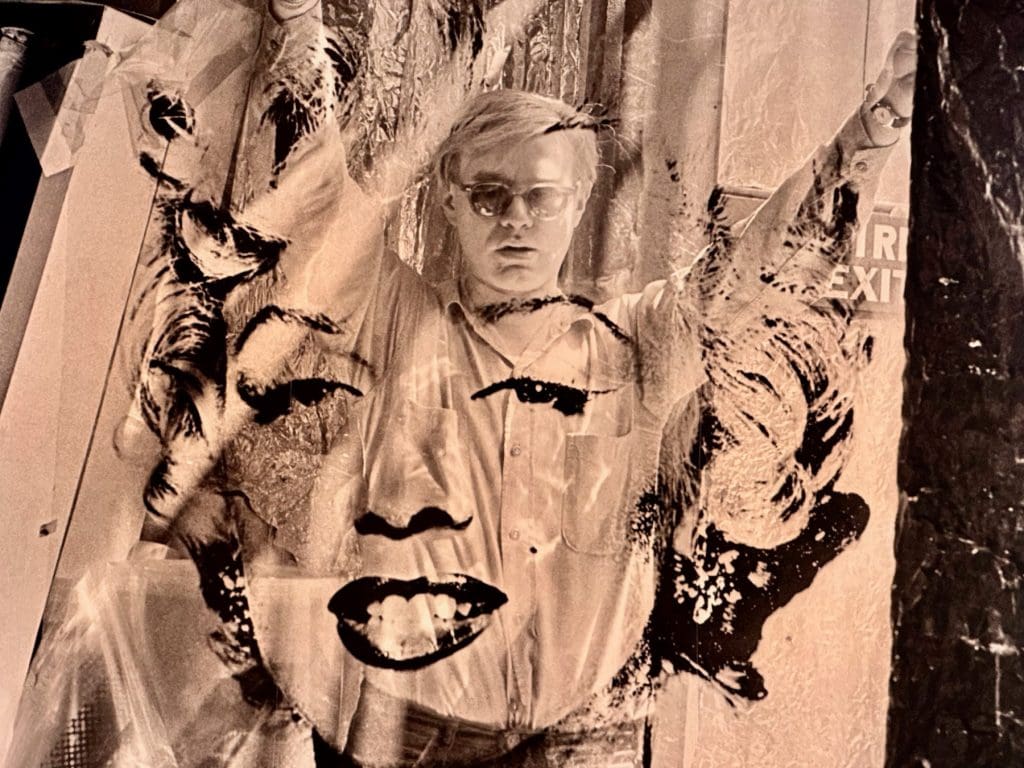
Warhol was born Andrew Warhola in 1928 to Austro-Hungarian immigrants from what is now Slovakia. We see early pictures of his childhood juxtaposed to the city of Pittsburgh which James Parton described as “hell with the lid taken off” in 1868. It is clear how important a part his mother Julia played in his early life, as well as celebrities – a theme which was to repeat throughout his career. The gallery has the most extensive collection of Warhol’s possessions and memorabilia, as well as an exhibition juxtaposing his work with those of KAWS.
Point State Park and Fort Pitt
Leaving The Warhol, I walk back towards the Allegheny River and turn right following its course along the Three Rivers Park to Fort Duquesne Bridge. Then I cross the bridge to Point State Park, with its State Fountain, which marks the point where the three rivers meet. It is a beautiful spot, and a cool place to hang around on a summer’s day with a refreshing breeze off the rivers.
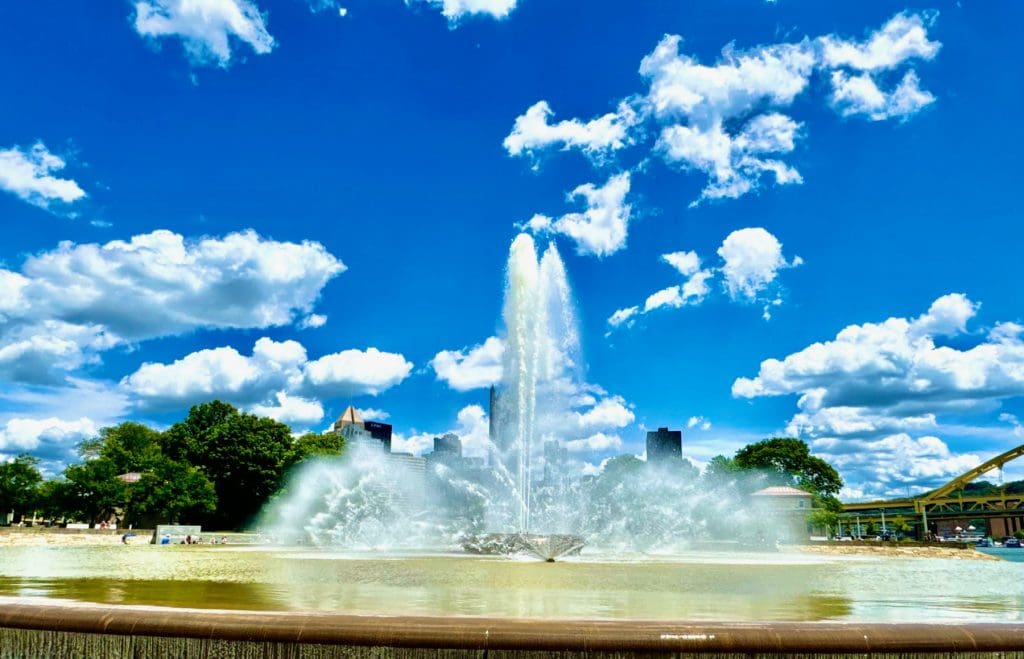
Pittsburgh was founded on 25 November 1758, after the British Prime Minster William Pitt the Elder. The Point was one of the most strategic spots in North America. The Fort Pitt Block House, built in 1764, is the only surviving building of the fort, which protected these waters for the British.
Next to it is the Fort Pitt Museum which tells the story of the origins of Pittsburgh from when the Native American leader Tamaqua requested the British to build a fort here. It also provides an interesting perspective on the role the city played during the American War of Independence, where the native American tribes fought on the side of the British.
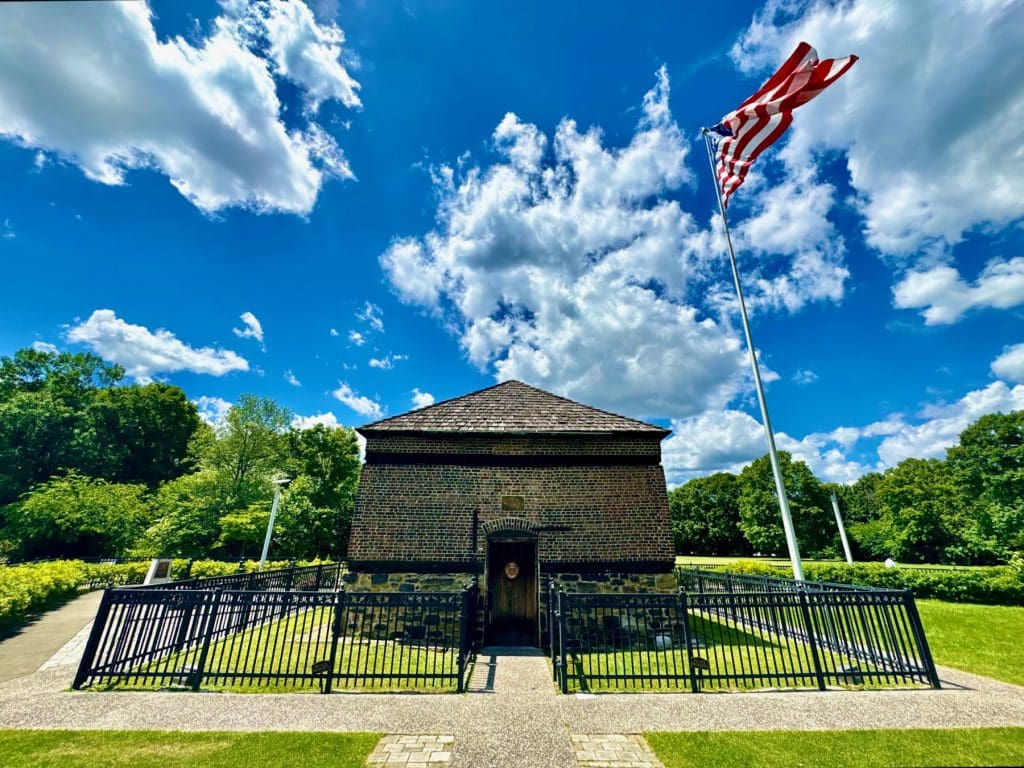
Station Square
Unfortunately, somewhere along my walk I managed to twist my ankle, so I spent the rest of my day relaxing on the terrace at the top of my hotel, the Joinery. Fortunately, this had the most wonderful view to the other side of river across Smithfield Street Bridge. The terrace had cool music and was a great place to relax after what had been a strenuous few days travelling.
The following day, I cross Smithfield Street Bridge, which is perhaps the prettiest bridge in Pittsburgh to Station Square. The square is built around the old railway building and track for the Pittsburgh and Lake Eerie Railroad. At its heart is the magnificent station building built between 1898 and 1901, and which now contains the Grand Concourse restaurant.
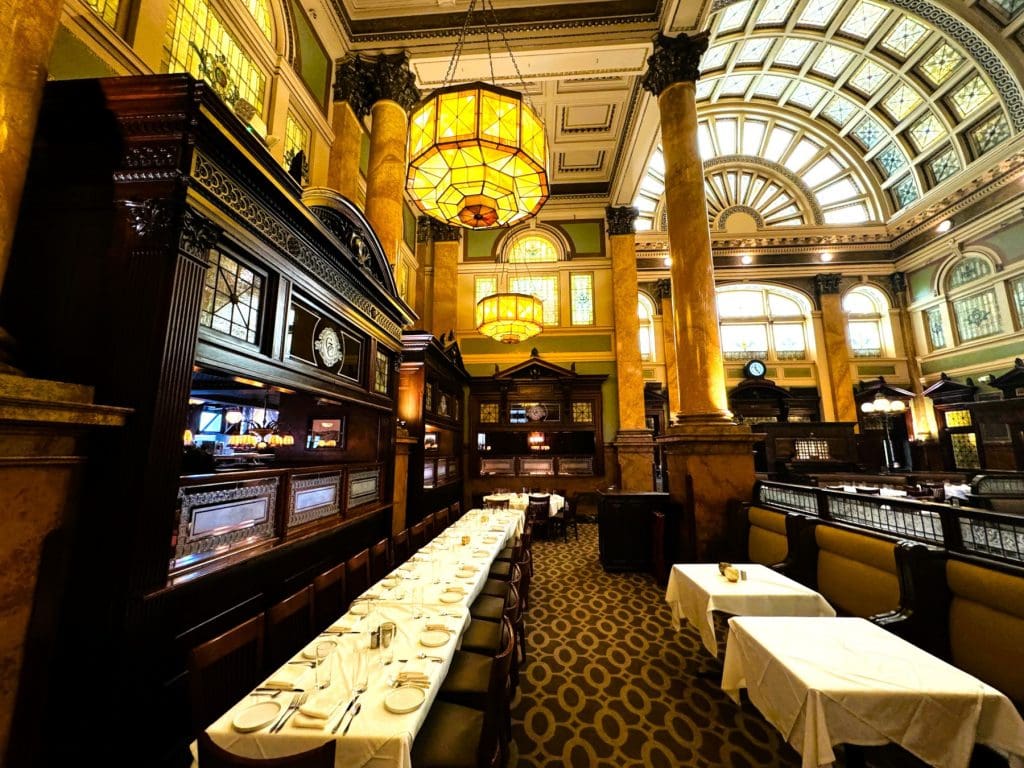
An absolute gem, inside is the most beautiful Art Nouveau architecture. I bump into Don Biesinger, who looks after the building and specialises in its remarkable woodwork. He shows me photos of the area when it was a major station, servicing the many steel mills in the vicinity.
Station Square is a prime example of repurposed industrial space. The former railway sheds have been turned into a Hard Rock Café, but it also doubles up as an outdoor museum with interesting examples of industrial heritage including an impressive Bessemer Converter, which was made in 1930. It is a might beast.
Monongahela Incline and Mount Washington
As Pittsburgh developed as a steel city, the workers needed a way to descend from their homes on the hills to work. At one stage there were 19 inclines (funiculars) in Pittsburgh. Only two remain, one of which is the Monongahela Incline, built between 1869 and 1870, which leads up from Station Square to Mount Washington. Stand at the back for the best views.
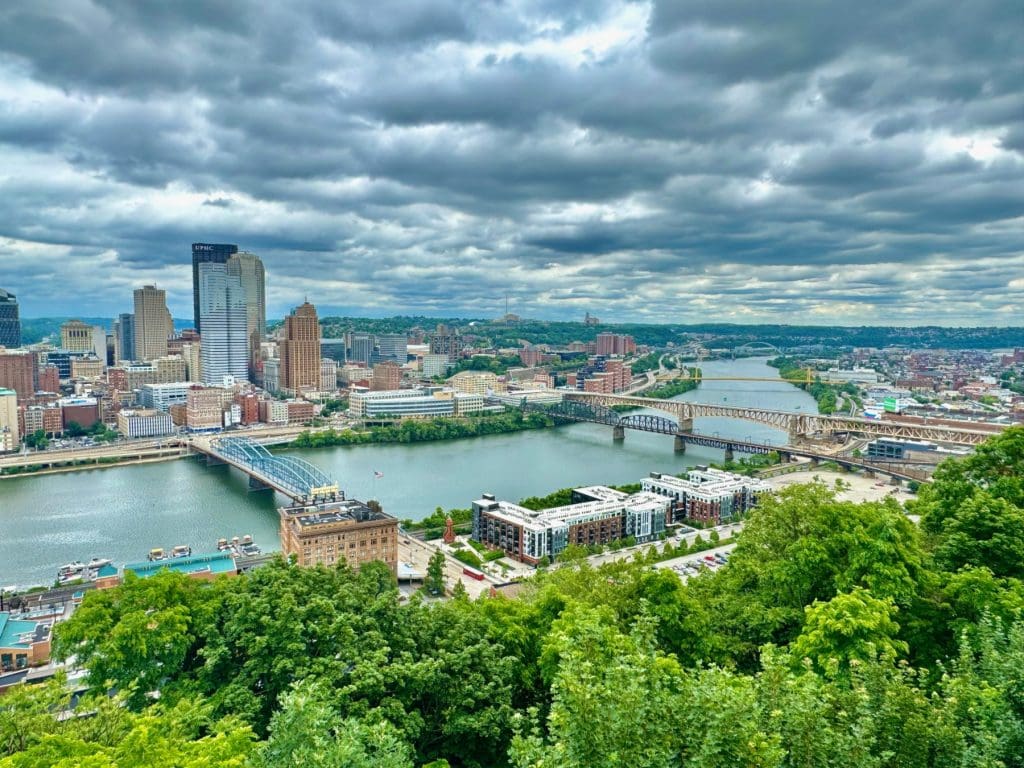
A return ticket costs $2.75. Buy the ticket at the bottom of the hill and stamp it at the top, leaving you three hours to explore the hill before returning to the city.
Mount Washington used to be called Coal Hill, as the mineral was extracted here from the 1760s. The incline was built in 1870 to transport factory and mill workers from their homes on the top of Mount Washington to work. It was renovated in 1994 and is still used by residents.
The main reason for non-residents riding on the incline is to enjoy the spectacular views of downtown Pittsburgh, especially from The Grand View. If you carry walking along Grandview Avenue, with its magnificent properties, you can see The Point, before taking the other incline down Mount Washington, although you will have to pay separately.
I take some time out sitting on one of the benches, enjoying my lofty perch and admiring how green the surrounding area is.
Union Trust Building and Mitchell’s Pub
While in the station, Don had told me I really should visit the Union Trust Building which was designed by FJ Osterling and built between 1915 and 1916. As it is just around the corner from my hotel I head there on my way back to the city. The interiors are amazing – just pop in.
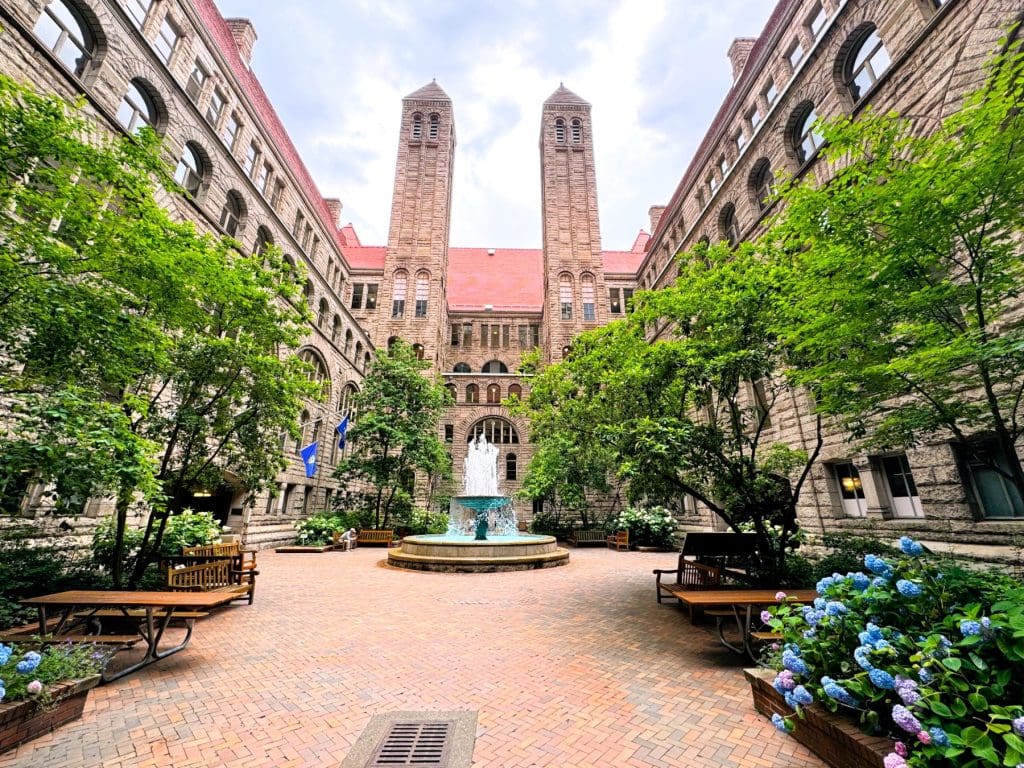
Around the corner is the Allegheny County Court House, designed by H H Richardson, who also was the architect of the hotel of his name I stayed in at Buffalo, which somehow seemed to bring my tour of Buffalo, Cleveland and Pittsburgh to a nice circle.
However, my final stop is at another Pittsburgh institution, Mitchell’s Pub, which opened in 1906 and claims to be the oldest bar in the downtown area.
Settling at the bar I eavesdrop on lawyers’ conversations discussing their clients chances for the following day in court. I feel as if I have dropped in on an episode of Ally McBeal. Eventually, I am given free advice on a case that involved me some 15 years ago – if only I had a time machine.
Like Buffalo and Cleveland, Pittsburgh’s glory days date back to the first half of the last century and were based on industrial dominance. The city hit bad times in the 70s when the steel industry collapsed as it could not compete with Mexico and Asia.
“For a minute we were Detroit,” says my Uber driver John Stolec, Pittsburgh born and bred, as he takes me to the airport for my flight back to the UK. Now, Pittsburgh has been revitalised as a techno hub drawing in lots of young people. At night it is really lively, with great bars.
“It’s also quite green,” John adds. “People are surprised.” I certainly was. Pittsburgh, a surprising and green city, a great place to go for a Sunday stroll just try not to twist your ankle.
Things to Do in Pittsburgh
Apart from taking a walk through downtown Pittsburgh, there are plenty of things to do in the city. Try Visit Pittsburgh for further advice.
